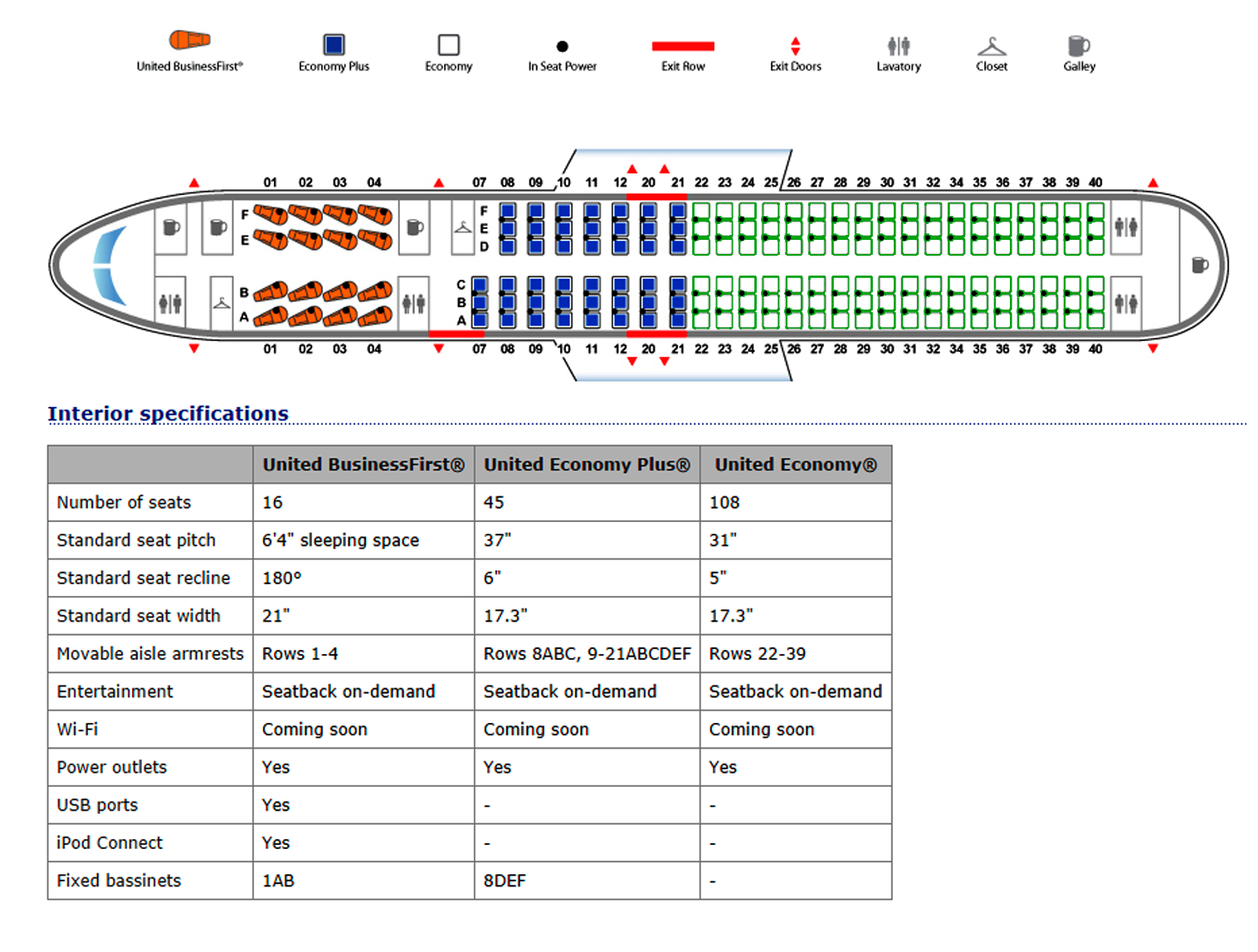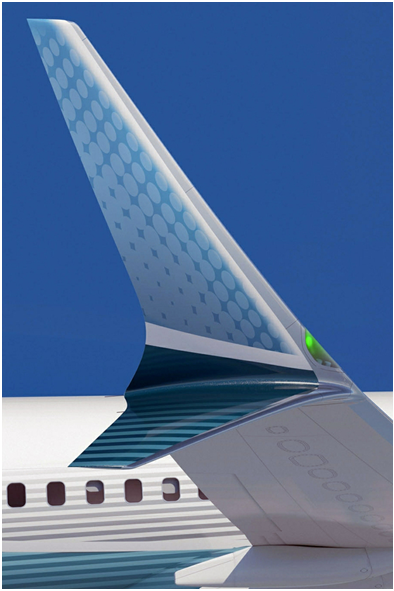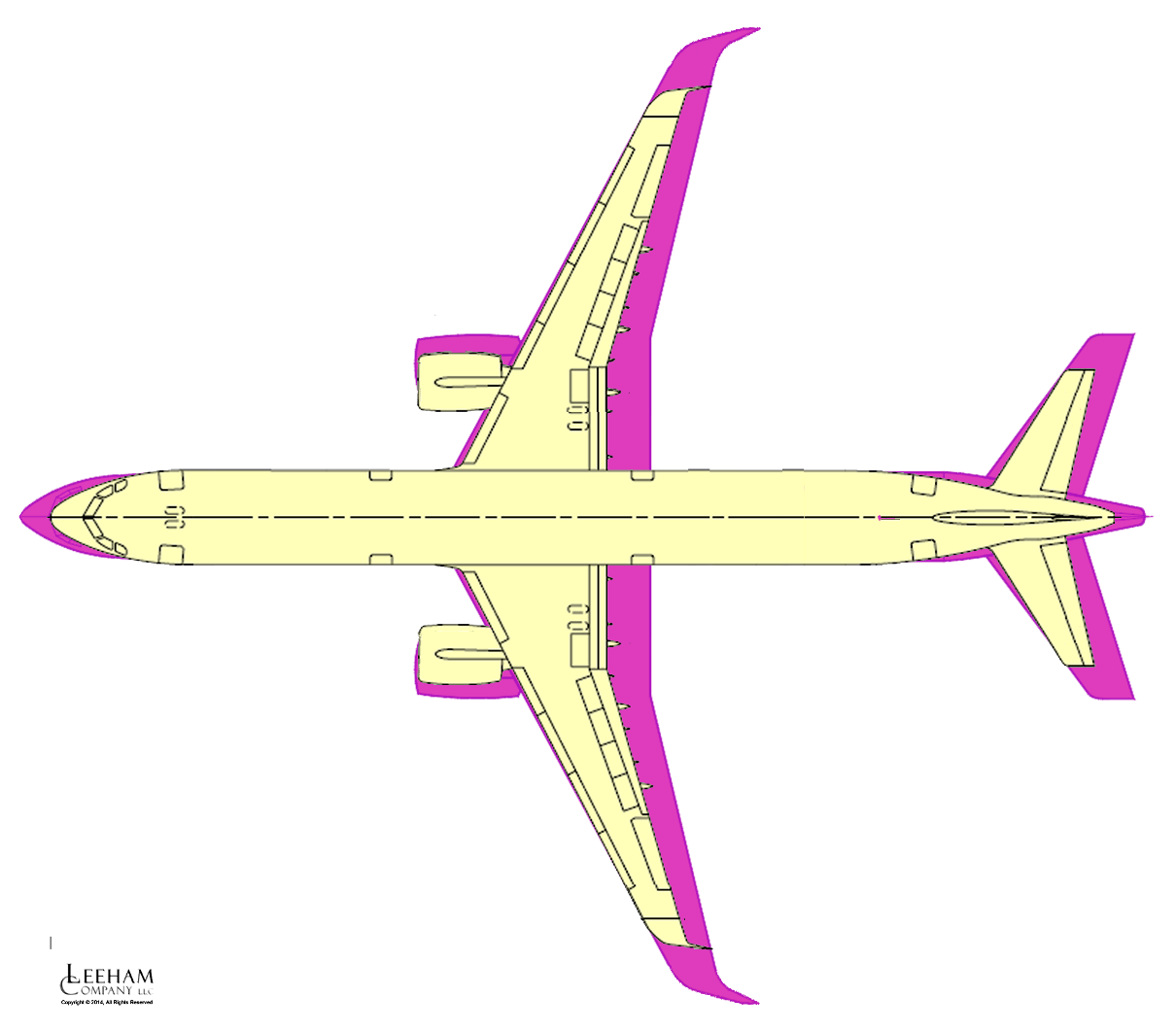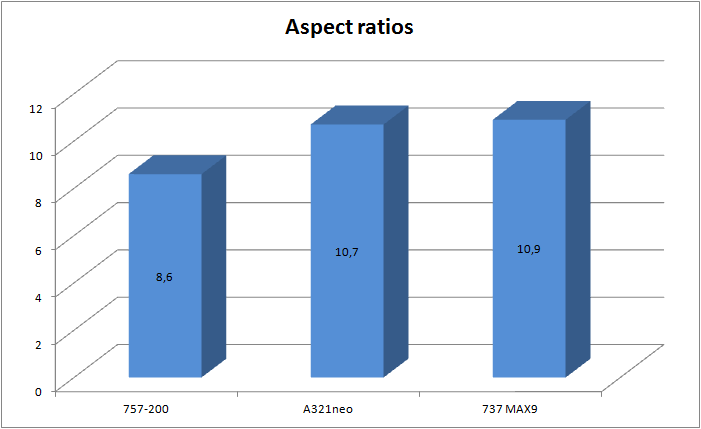Leeham News and Analysis
There's more to real news than a news release.
Boeing 757 MAX: why its operating economics does not work
By Bjorn Fehrm
Introduction
Feb 12, 2015: In a series of articles during the autumn we covered the replacement scenarios for Boeing’s 757-200 when used for long haul passenger operations. The series also included an interview with Boeing’s head of new airplane studies, Kourosh Hadi, director of product development at Boeing where he outlined what Boeing studied and why.
This week The Wall Street Journal published an article portraying that Boeing seriously considered launching a re-engined 757 as a response to Airbus A321LR. Boeing has since vehemently denied the story and we have given the reasons why it does not make sense for Boeing.
As a complement we show the operational economical analysis that we did at the time of our 757 articles, now updated to the exact modifications suggested by The WSJ, a new engine and new winglets paired with modern avionics.
Discussion
Engines
One of the reasons we did not include an updated 757 in our article series was its peculiar engine need. It is one of the few modern airliners that asks for engines in the 40 klbf thrust class. At the time of 757 development Pratt & Whitney (PW) bet on the 757 as the heir to Boeing’s 737 for short and medium haul, consequently they developed an engine, PW2000, especially for this aircraft type. Rolls-Royce conceived a derivative of its larger RB211-524 to cover this thrust class, RB211-535.
The situation is the same today, any re-engine of the 757 would require a new engine development. The closest modern engine would be the PW1133G or LEAP-1A which is used on Airbus A321neo and LR. PW has already talked about higher thrust versions of the base PW1100G. To stretch it to 40klbf is not possible however without major changes. Classical “throttle push” stretch i.e. spinning the engine faster by virtue of injecting more fuel into a further developed hot section is only possible to something like an additional 10% of thrust. This would take us to 36klbf, a far cry from the 43 klbf needed for a direct replacement of the most popular engine on the 757, the RB211-535.
In practive one would need even more, modern engines are heavier and their higher by-pass ratios gives them a larger “LAPSE” i.e. they lose more power due to forward speed. The critical phase on takeoff where the ultimate thrust for a 757 MAX is needed is at the safety speed V2 of 155 kts with one engine inoperative. This is where the max thrust of the engines are needed, not for normal takeoffs. So we definitely talk about a new development for a 757 engine should a 757 MAX be realized. The reasons why such an engine development is unlikely is given in our article “Here’s why Boeing won’t do a “757 MAX”.
Configuration of 757 MAX
To compare the performance of a 757-200 classic and a MAX variant against its main rival, Airbus A321LR, we need an apples to apples yard stick. As these aircraft are of different size we need to compare all critical values per transported passenger. Boeing and Airbus use different standards for how they configure cabins, therefore one cannot use their seat numbers for such comparisons. We therefore did equally configured cabins for the article series, based on United’s configuration of their 757-200W used for long haul. As can be seen in Figure 1 this is representative or how the airlines configure 757 for long haul.
Figure 2 shows how United has split the seating inside the 757-200. They use the extended pitch needed for the overwing exits to double as extra legroom for the final rows of the Premium economy section. This is typical for how Premium economy is configured with aircraft using such safety exit configurations.
The cabin for our A321neoLR is show in Figure 3. It turned out to be very close to the cabins Airbus had been using in their studies of the A321LR.
With these equalized cabins we can compare the A321LR, 757-200 classic and a 757 MAX with new engines and wingtips of the Boeing split winglet type, Figure 4.
As described we assume state of the art engines which could be available 2021. We base the performance of these engines on the technology level of GE’s GE9X, suitably adapted to a 40klbf thrust class (performance don’t scale downwards linearly as compressor and turbine tip clearances don’t scale 100%). This is the most efficient engine in development today with pressure ratios of 60:1 and a high by-pass ratio.
As an example PW’s P1100G and CFM’s LEAP-1A trails this generation of engines with around 5% in efficiency as their cores are only working with pressure ratios of 50:1. The higher by pass ratio of e.g. a geared architecture cannot compensate such a large difference in thermal efficiency when one compare on the airframe efficiency level, where the extra weight and drag of a larger nacelle is taken into account.
Performance
Despite putting on the most efficient engines possible and the latest winglets in our propriatory airplane model, a 757 MAX would trail the A321LR with more than 5% on a per seat basis and with 9% on a per trip basis, Figure 5.

Figure 5. Seat mile and trip mile fuel costs for A321LR , 757-200W and a 757 MAX. Source: Leeham Co.
Why is clear to us, the large 757 wing increases the wetted area to much and the lower aspect ratio gives a to high induced drag, Figure 6 and 7. For any new 757 MAX a new wing with higher aspect ratio would be needed and a fuselage with the cross section of a 737 is just not worth it, notwithstanding production and tooling issues described in our other article.
Conclusion
With our modeling capability being very close to the tools that the OEMs use for preliminary design studies we can check how different aircraft configurations, present or future, pan out. It was clear when we did our original article series that a 757 replacement would have to be a more modern design. We also described the work Boeing was doing seeking solutions where a new or incremental development investment would make sense. It would not be a 757 MAX.








Wow, thx alot for this very good summary. Especially while it’s free.
I think Odds are high that Boeing will do something inbetween the 757 and the 767 – the often talked about small-twin-aisle. The 787-8 will be gone regarding new orders in about 5 years time. So they could cover all from above the A321, kill the A330 and “delay” though decicions regarding NSA/737-8 max.
Isn’t this debate a clear example of a niche market….and as Airbus got there first, Boeing has been effectively left with a choice of developing a rival ‘vanity’ product, which is almost certain to never produce a positive commercial return, or else staying out of the segment and leaving Airbus to mop up? Neither option sounds great for Boeing but the reality is that Airbus has taken the initiative
I suspect the last “vanity project” for Boeing has been the 748.
Cannot see that ever being repeated.
Is there truly a viable market for something a bit bigger than the 757?
The 321LR takes a good chunk out of the lower end, and $10 billion for a new airplane with a bit more range and a few more seats,even if it is the top of the range of what is usually called the NSA looks awfully expensive.
You have to cover the 250 +/- market up to 6500 nm. Intra-Asia widebody which was done by A330. Thin intercontinental routes, heavy nortamerican routes where a 787 is just to much plane and a A321 just not enough. North-south america too.
That is of course not a 757 replacement but more-ore-less a 767 replacement. The 787 isn’t that because it evolved into a real Long-haul jet and with 787-9 and -10 beeing the future even more.
I would call the A380 a vanity project
the 747 was trying to keep up with that program i.e. still claim as full spectrum of aircraft and wishful thinking it would at least pay for itself.
That said, I think the 747-8F is one of the finest looking aircraft of all time
I don’t care for the humpy 8I, but never did like that look on the pax models anyway.
Excellent analyses. makes me want to have your modelling tool to put in a A322, A330-400 and a few other machines, Ecoliner? 😀 Until it becomes free online, I’ll do with graphs, guestimates & extrapolations 😉
There’s one crucial thing missing in the 757 modelling though. Something Boeing did with previous upgrades like the 737NG, 747-8 and new 777X and would probably do with a 757MAX too; Stretch it a few rows. In the cases of the 752 ~4 meters /~27 seats to
– improve CASM
– put the A321LR at arms lenght
– create room below it for the MAX/NSA
A 753MAX might also have been stretched too by 2 rows to create a family.
Apart from the analyses above, a look a the 757s OEW, seventies avionics and bulk load cargo deck would dis-encourage any MAX dreaming. What Randy said yesterday is also totally relevant, to build a seventies aircraft you have to rebuild a seventies factory. Get the drawings from the micro films, resource parts from suppliers that no longer exist.. a nightmare!
Airbus fanboy decadeology: 1983 was in the ’70’s, and 1988/89 were in the 21st century 😒.
Gee. Maybe the 787-3 wasn’t such a bad idea after all.
If dead weight, costs and overcapacity don’t really matter, the 787-3 would have been a solid short haul 400 seat option. Definitely.
http://i191.photobucket.com/albums/z160/keesje_pics/787-3.jpg
Thats the missing link here, the 757-300 would make more sense. The mystery is why Boeing didnt promote it more and even a 757-400 rather than cut the 757 line and put all its eggs in the 767 basket. The 767-200 wasnt selling any more and the 767-400 didnt really make its numbers either
Excellent analysis, but a small nit to pick. 😉
Figure 6: That’s an A321ceo overlaid on a 757-200W, not an A321neoLR.
http://www.airbus.com/fileadmin/media_gallery/files/tech_data/AC/Airbus-AC_A321_May2014.pdf
–
NB: It would be interesting if you had a look at apossible 10 frame. stretched A322 which would have the same MTOW as that of the A321neoLR. IMJ, it should have about the same US transcontinental range capability as that of the current A321ceo.
Thanks, nit fixed 🙂
Excellent analysis and thank you for making it available for non-sub.
While it focuses on the fuel burn numbers, I’m pretty sure the actual CASM delta would be even higher if you factor in other costs. For all intents and purposes, the A321LR is just another A321 with ACTs and minor mods.
For airlines, it fits seamlessly into existing A320 fleets, easy crew management and maintenance costs, even bigger so for those airlines that operate only A320s but want low risk expansion of their market reach. For Airbus and their suppliers, the A321LR rolls off an existing high volume production line, lowering the production costs and so cheaper selling prices.
The 757MAX on the other hand would need new investment by Boeing and suppliers in engines and tooling (possibly other upgrades) for a low volume production line and it is still going to be a different type to other aircraft in airline fleets – different spares and maintenance for example. It may have worked if it weren’t for the A321LR.
Any given wing can cover so much market segment. At any point in time, two models are about all that is going to be optimal. The 737 and A320 wing are similar size and work for 160 to 200 passenger aircraft. In that regard, both manufacturers are in the same position. First priority, build a 40 to 50m wing first for a larger model, 200 to 250 passenger, next priority, replace the 36m wing, but that is 20 years off still. Look at the lifespan of the wing of the A330, 767, 777, these are 30 to 40 year production runs. 737 and A320 direct replacement of 36m wing, 2035.
Something I thought as well was the lack of an available engine.
Could you do a throttled back engine? (you would miss the high and hot aspect and maybe airfield restrictions)
And how about the 300 length, more pax and better range than existing?
I really do not think so but maybe worth a bit of modeling
The throttled back engine is doable (it improves hot and high), the RB211-535 was such an engine, it was throttled back with about 1/3 from 60klbf to 40 and then 43klbf. But it was when fuel was less important and the RB211 takes more fuel than the custom sized PW2000. The closest modern engine would be the GEnx-2B at 67klbf but it would be about 10% worse than the engine we modeled so the economics would not work at all.
I said it badly, could you get by with the absolute maximum thrust you could wring out of a PW GTF? I.e. less thrust than existing 757 engines. I know that gets iffy performance wise but the ATR makes do with something around half the engine the Q400 does, goes slower. Also wing performance issue.
I have been thinking about the old 757 market. Of the 469 flying, something like 200 are in freighter service (between UPS, FedEx and the ones that have been converted, maybe not quite but call it ball park.
That leave 369 roughly in some form of passenger service and how many of those are still at it as they have been paid for? And would those same operates be able to make money buying a very much higher priced new one?
Upshot is its not like there is a true 1000 aircraft replacement market as a lot of the old market has been picked off by longer range 737 and A320 ceo.
In that I think Boeing is right on the numbers.
Where they get it wrong is if there is a need for higher pax counts at a low cost medium range (2500 miles) and also clearly some at around 4000 miles its a nice niche for Airbus.
For Boeing who can’t compete is there really a 250 passenger market area that is more towards the 4000-4500 rang?
And that lays a dilemma as well, Boeing pushes for a strong 4500 mile market and Airbus comes in and does a new wing on the A321 and undercuts it.
Boeing has accepted they have nothing to offer and have to take the hit no matter what spin they put on it.
Interesting times for sure.
I did a quick check with the aircraft model and Gasturb for the engine side. A 757-200W need 30klbf at V2 (Induced drag 20klbf, parasitic drag 4klbf and 6klbf for a 2.4% climb rate) when one engine is inoperative which is the dimension criteria for the engine side.
Lapse at 155kt / M 0.23 is 24% so you need an engine with 39.5 klbf SSL ISA thrust. No way you can throttle push a PW1100G or a LEAP-1 to that.
I hope this is not taken as beating a dead horse, thank you for doing the numbers as those are beyond my capability by far.
I have seen too many times someone said “you can’t do it” and someone found a way to make it work.
I know it would take some changes, but it would seem possible to wring another 3 or 4k of thrust out of it.
Still does not overcome the other aspects of what works and in the end maybe just a wasted thought,
Any possible 757 could face an A321LR with folding wing tips. That would be an interesting calculation.
Isn’t the 757 in another gate size?
What I have read and understood over the years, is that both the GTF and LEAP have key elements dimensioned to grow to 40k lbs thrust in the future.
Wouldn’t it make sense to invest more and build a NSA on the 757 basis and create a new family and replace the 737 earlier? It seems airlines are rather up-sizing their types than using smaller ones, so I assume any NSA would be bigger than the current 737.
A smaller 757 might end up just above a 737-8, while a stretched version should have potential for up to 200-250 seats. Question is just, if it would be too heavy and a lot less efficient than a current 737-8/A320.
At this stage Boeing doesn’t have easy options. New is they now say loud & clear they are looking at a new 767 sized aircraft and talking to airlines about it. “above the 757” (read A321) so 230-270 seats, up to 5000NM. Right into A300/310, 767, A332, 787-8 territory.
Meanwhile they try to convince everyone the “757 replacement” market is small only 1000 757 were ever build, half of them already retired.
Regardless, Airbus sold 2300 A321s to 100 customers. So there’s probably more to be said about this segment then just “757 replacement”. Boeing understands.
There obviously is a market in the A321 class. How big? If you can tap it with a developed aircraft like Airbus did then its a sweet spot. Build and all new and fall on your face with the whole cost issue.
Boeing put themselves in the position by not developing and all new single aisle when they should have (it should have stopped at the 737-300/400/500 (classic is a stupid name as that’s what the original was)
Frankly I thought they should never have come out with the 300/400/500 and done an all new then as the handwriting was clearly on the wall as to where engines were going.
And if you try to span the whole single aisle segment and that somewhat nebulous A321/757/A300 segment, the fuselage gets to be an issue.
Twin aisle longer range and not the same utilization does not return the same rate of revenue as a single aisle that’s used 17 hours a day.
So how much market, how much revenue from that market and what is the ROI for a larger aircraft that does not earn as much money (or has to earn a lot more however you want to look at it.)
And as we see with the 757, to much aircraft and the economic get swamped by a more efficient but somewhat less capable aircraft (the A330NEO picking off the bottom of the 787 range market)
Can you get a mini twin viable enough to cross over both ROI wise but also cost wise for the more price sensitive market?
As McNeneary has no desire to be anything more than Nero we know nothing happens for some time.
Maybe an interesting question is would the public accept the Sugar High TBW (thrust braced wing) that Boeing is playing with?
It looks more like a prop job than the low wing jets we are accustomed to.
787 is way out there, but it looks what we are used to.
The truss braced wing is interesting. How much structural weight can be taken out of the wing by adding a brace versus the current cantilever? Resisting the bend of the wing over the height of the fuselage versus over the depth of the wing seems like a no brainer from a structural efficiency standpoint.
AV week did a look at it (we used to call them struts though!)
It saves some weight inboard but cost some weight outboard.
They are still sorting through the trade off though it seems to be a 5-10% efficiency jump if they can make it work.
Able to sell it? Another question. I think people go for it as long as the Airline execs support it and the press doesn’t bad mouth it but you never know.
Will also need bigger gates at the airports unless you use (big!) folding wingtips — which in turn will increase the weight even more.
A high wing is aerodynamically efficient. it also give future flexibility for high BPR engines. But apart from that a wing is also a fueltank and wheelbay. and hard landings are part of operations too.
Theoretcally a good configuration but it has practical disadvantages too. Years ago did some calculations & sketches (well Henry Lam did) on “Turboliner” and 7 abreast standing cabin “ECR-20”..
http://a1.format-assets.com/image/private/s–kbocc0kr–/c_limit,g_center,h_900,w_65535/a_auto,fl_keep_iptc.progressive,q_95/36979-2035818-TE_V02_s.jpg
I don’t agree. Read
https://airinsight.com/wp-content/uploads/2016/02/airwaysnews02052016.pdf
The A-321neo/LR is not a B-757 but Airbus sure is trying to pass it off as one. I realize fuel economy is the driver but for sheer performance the 757 is superior. It has better short field takeoff and stopping capability and high altitude performance. If it can’t fly into and takeoff from La Paz, Bolivia with a full load of passengers and cargo, it’s not a 757. The A-321 can’t do that and the neo won’t be able to because the wing is the limiting factor. I like the cockpit on the A-321 but I’ll take Boeing performance. The 737-800 has a better wing than the A-321.
Finally…I surrender…I now see why the 757 has to be replaced. Its sad because I was so blindly convinced that the 757 deserved the kind of service life extension mods that the 737, 747 and 777 have been enjoying. This article has shown me the complexities hiding behind the simple “upgrade-the-engines-cockpit-and wings. I raise my white flag to full mast.